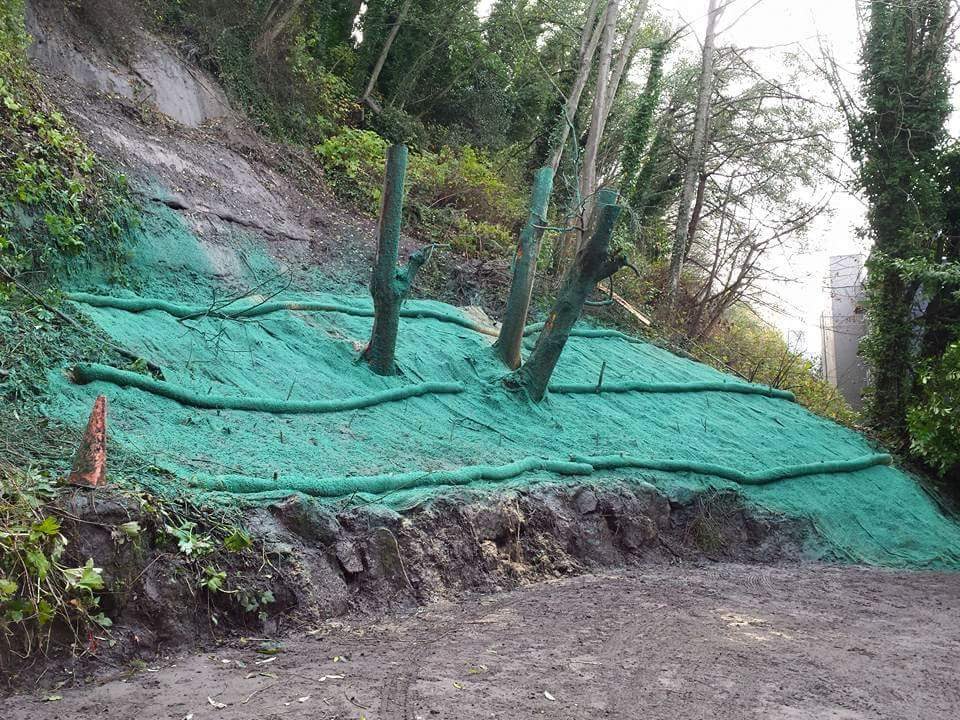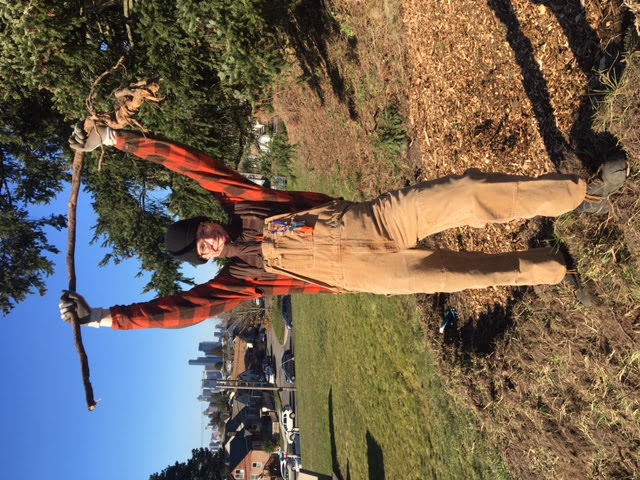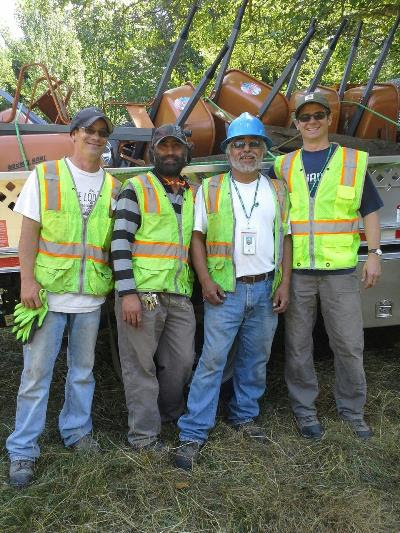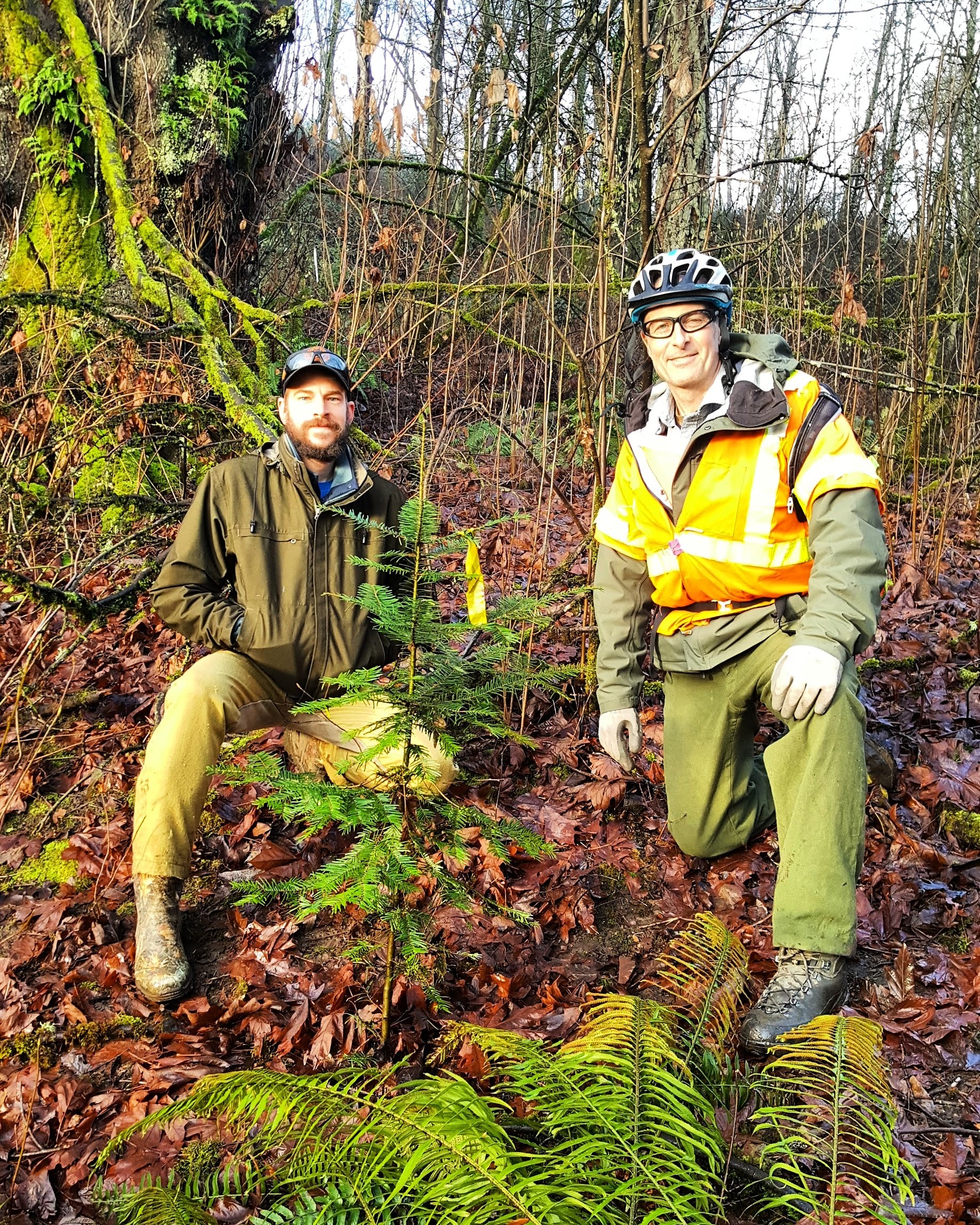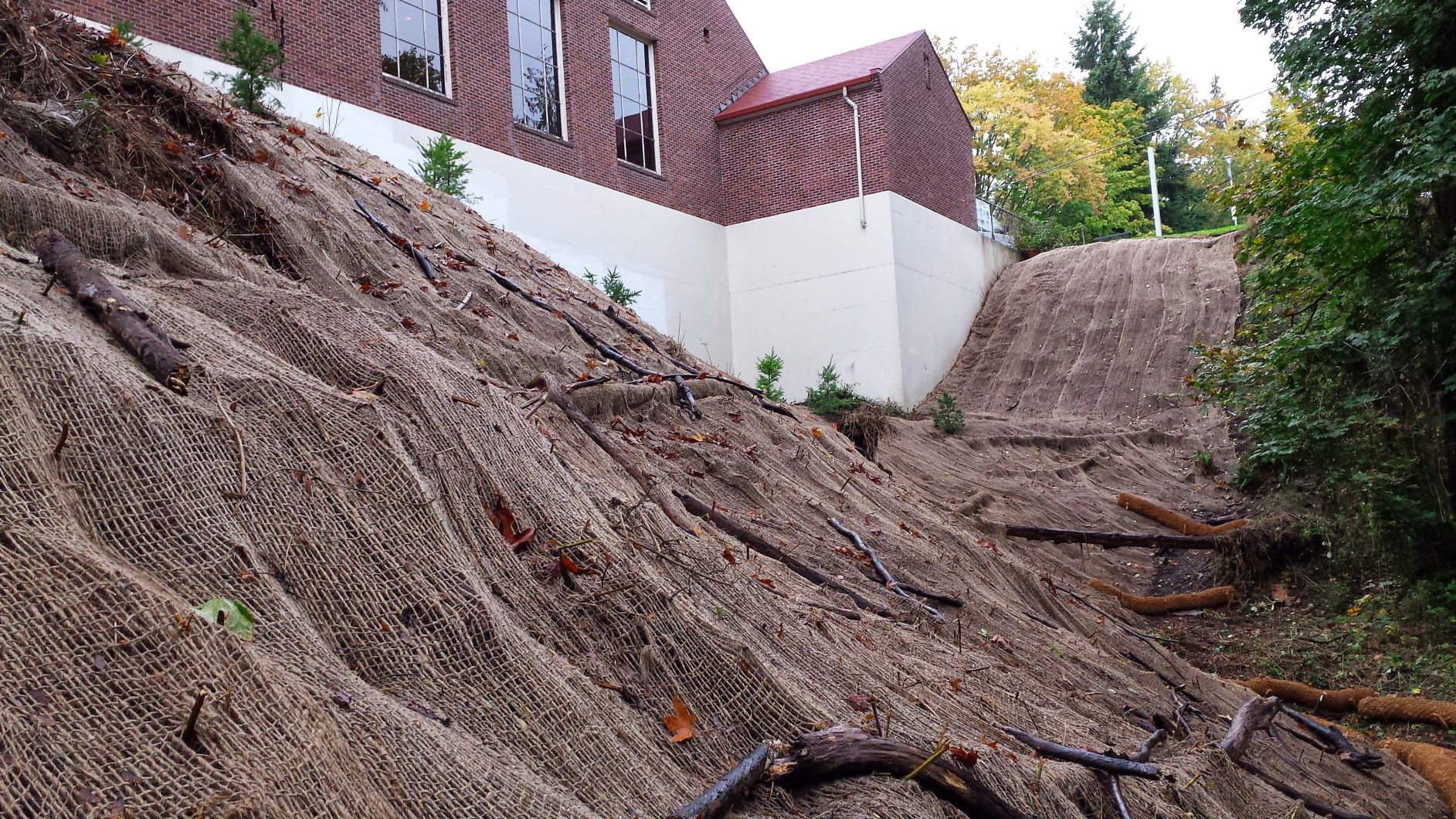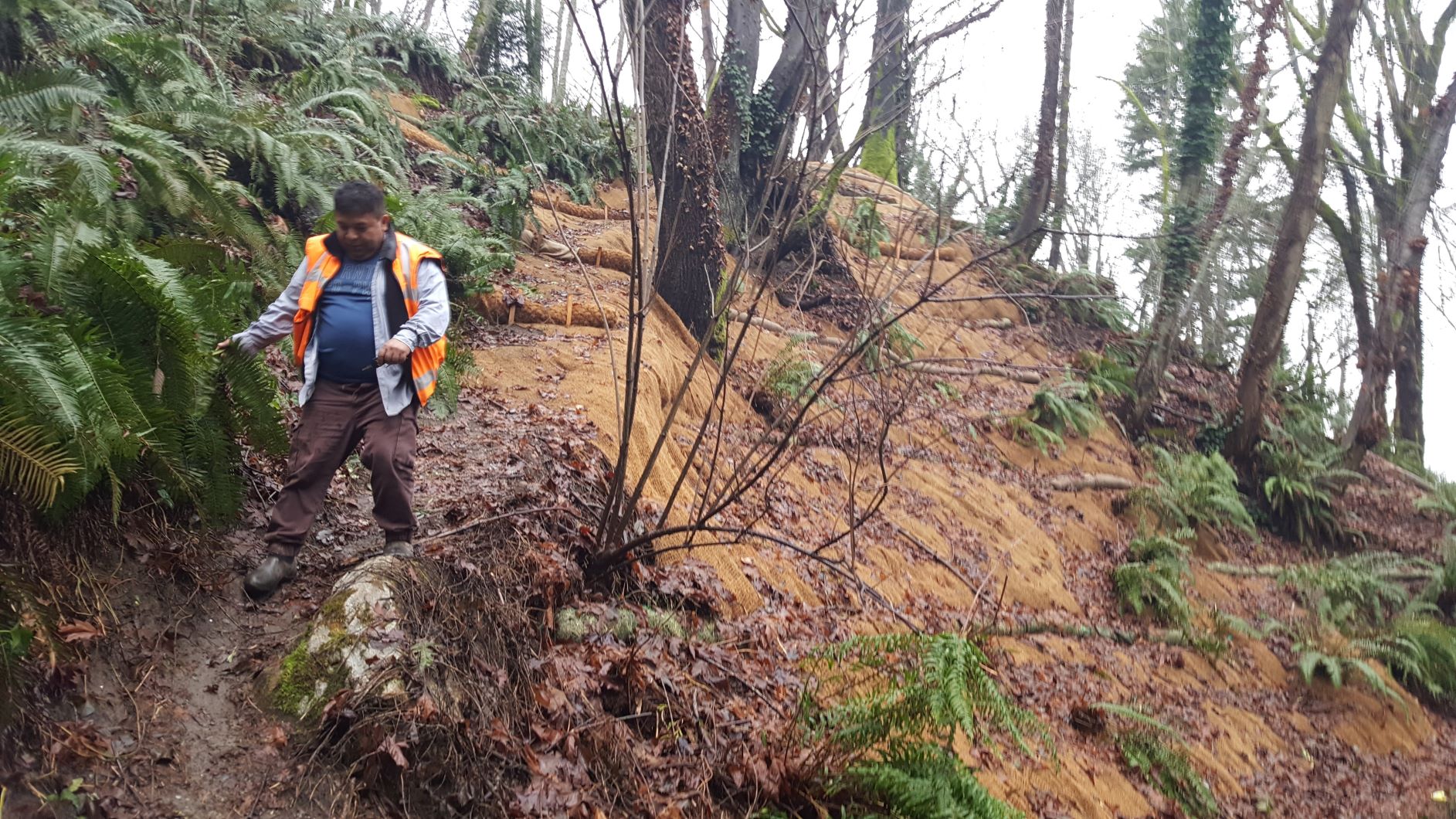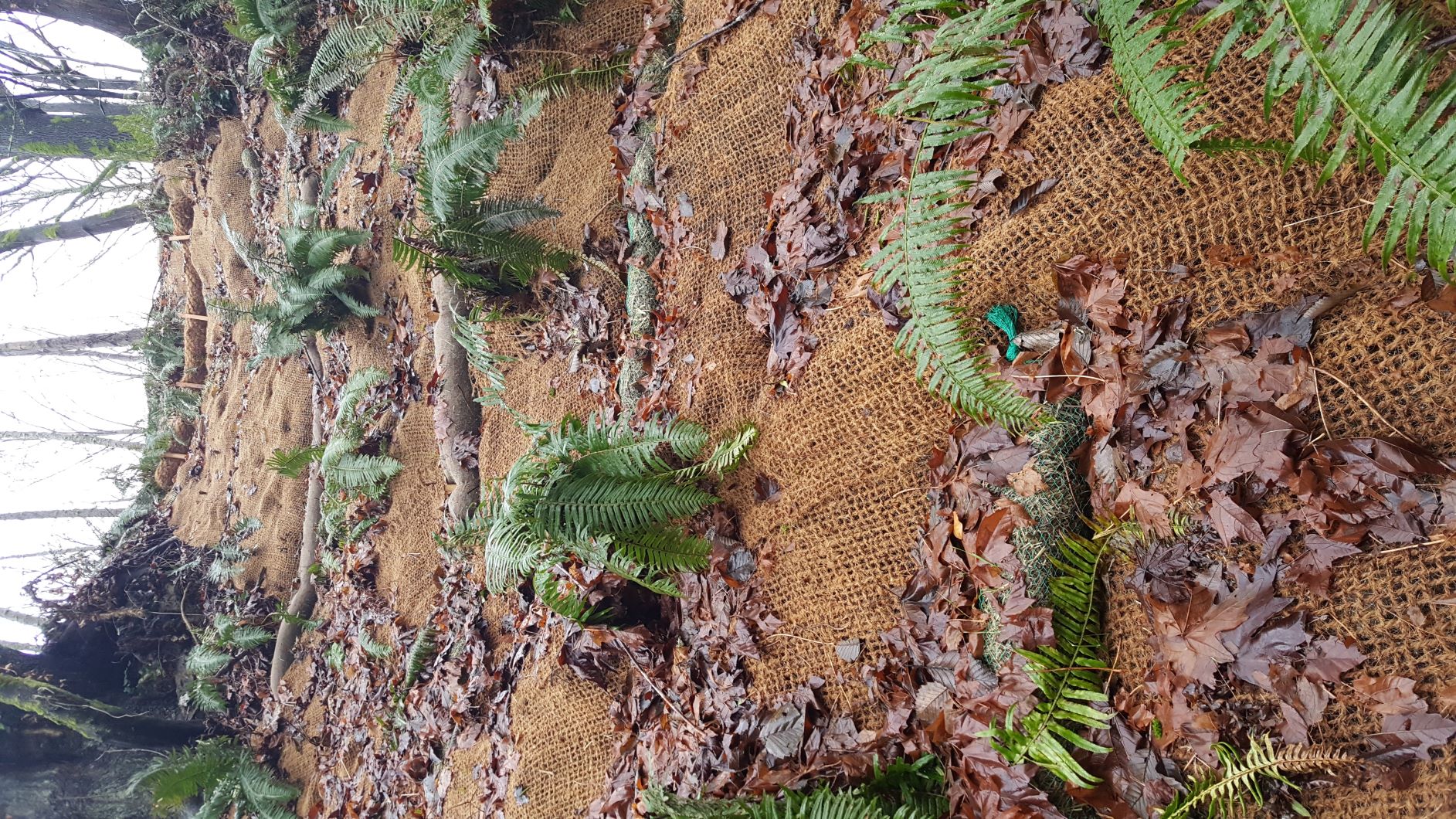Crew Resources
Background
Seattle Parks and Recreation’s Integrated Pest Management (IPM) program provides guidance on evaluating potential and existing pest problems in management of park lands. In utilizing the IPM process, when a pest problem has been confirmed, land managers determine what, if any, is the acceptable level of population of any given pest. When pest populations grow beyond acceptable levels, control methods are employed, and these take several forms: cultural, mechanical, biological and chemical. For GSP, implementation of the IPM program focuses mainly on weed populations. Most of the weeds occurring in our restoration sites are beyond acceptable thresholds and require control. The IPM strategies we employ include all potential weed suppression and control strategies but focus on non-herbicide strategies whenever possible. When it is determined that herbicide use is required, programs follow the city’s Pesticide Reduction Strategy. Herbicide applicators shall strictly follow this pesticide reduction policy and rules. All herbicide applications must be made under direct supervision of a licensed pesticide applicator and conform to all applicable state and federal regulations and City of Seattle policies.
The body of work that professional crews carry out is distinct from GSP’s volunteer-powered restoration in a few ways:
- Crew work employs a combination of mechanical, chemical and cultural methods to control and eradicate non-native invasive weeds, prepare soils, and re-vegetate with native plants. Crews hold the necessary certifications, licenses and training to do this more technical work. Teams will move mountains of mulch and install and irrigate thousands of native trees and shrubs over hundreds of acres every year.
- Other actions include more technical and intensive activities like installing erosion control material or using bioengineering techniques to stabilize soils or respond to landslides. Arborists will also selectively remove large trees in crowded forest stands as part of ecological thinning and gap creation prescriptions.
- Crews provide necessary support at GSP sites where restoration is led by Forest Stewards or partner organizations. During active restoration, most sites will require professional crew support to address noxious weed populations that are best controlled using methods of control not available to volunteers and technical expertise to work in Environmentally Critical Areas and in areas of dense vegetation.
- The sites where crews work are not always visible or accessible. We are active in the “wilder” parts of Seattle’s forested natural areas in places like the East and West Duwamish Greenbelts, the bluffs facing Puget Sound at Discovery Park and the steep ravines of Lakeridge Park’s Deadhorse Canyon.
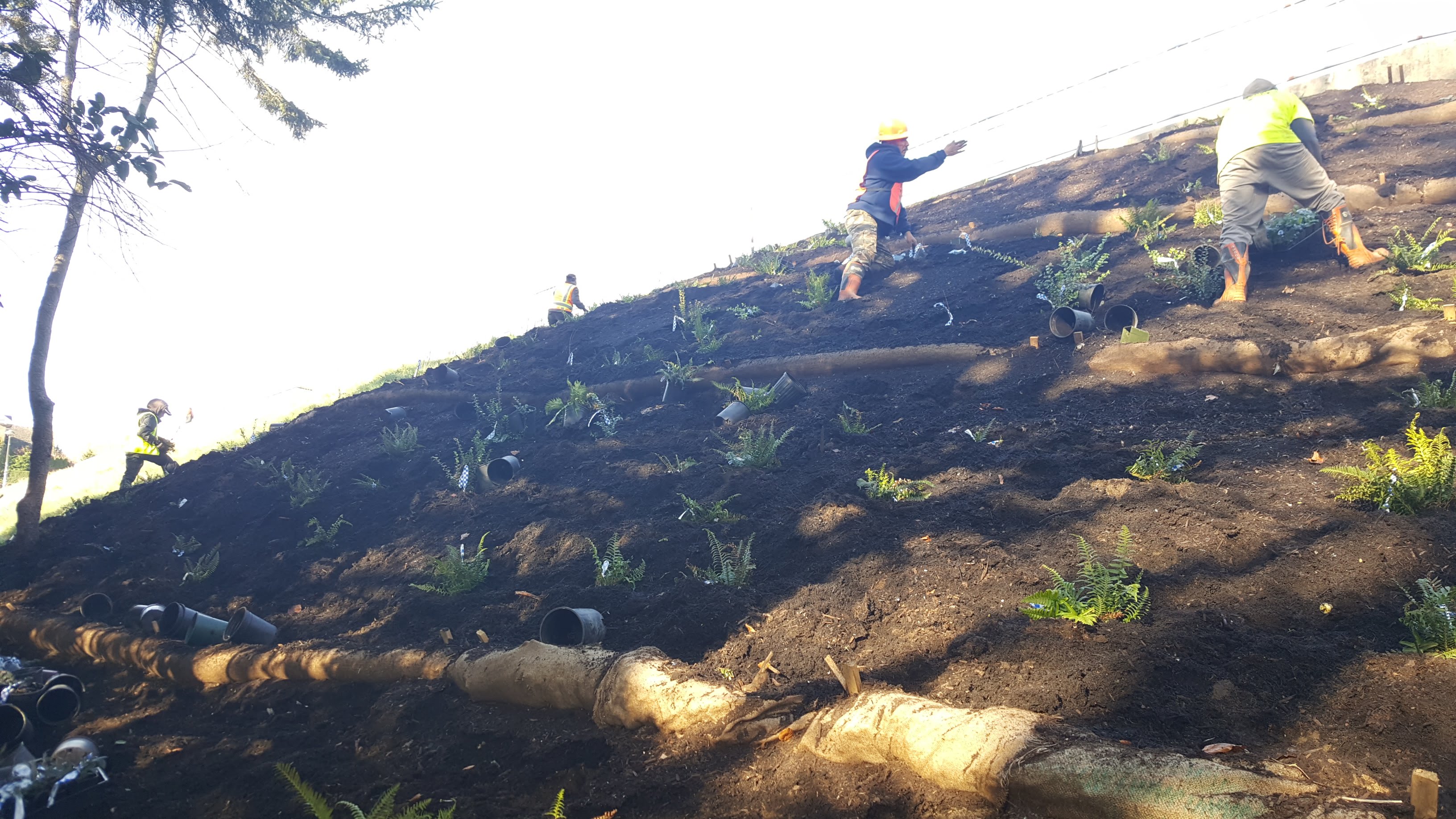


Crew Specifications
This document is a compilation of best management practices to be used while carrying out Green Seattle Partnership restoration activities on properties managed by Seattle Parks and Recreation or on public lands in the City of Seattle where work is directed by Seattle Parks and Recreation. The body of work outlined in the GSP Crew Work Specifications is intended to be carried out by professional crews, not by volunteers. The City of Seattle has determined that if City staff, their contractors, and GSP volunteers comply with the Best Management Practices, then GSP is following the restrictions included, but not exclusive to the City’s Critical Areas Ordinances (CAO), Citywide Pesticide Use Reduction Strategy and Policy, and Seattle Parks Natural Area Best Management Practices.
Where Crews Work
Zoom in and out using the arrows in the upper left corner. Click on the work areas within each park to view project information and other data related to phase of restoration, tree-iage value, and target ecosystem. Or view the map in its own window.
To better coordinate across crews, partner organizations and Forest Stewards, we developed the GSP Work View Map. This map does not replace the GSP Reference Map. It is organized to support crews in delineating project areas and carrying out their assigned scope of work.
If you are interested in using this map on your smart phone:
- Install Explorer for ArcGIS on your phone. If you do not have an organizational account (like a staff account through the City of Seattle), select “Continue without Signing in” on the start-up page. To get to the GSP Work View Map from the homepage, use the search function in the upper left corner of the app to search for “GSP WorkView Map.”
- To learn more about how to view different map features, how to use the measuring tool, and more, check out the quick reference webpage.
- If you run into additional issues, review the FAQs for Explorer ArcGIS from the app developers.
GSP Integrated Pest Management
Seattle Parks’ Integrated Pest Management program includes all potential weed suppression and control strategies but focuses on non-pesticide strategies whenever possible. Certain levels of weed populations are accepted within established thresholds and all reasonable non-pesticide pest control options are considered first before resorting to the use of pesticides. This strategy aligns with the Seattle Parks and Recreation Integrated Pest Management. Pesticide applicators shall strictly follow this pesticide reduction policy and rules. All pesticide applications must be made under direct supervision of a licensed pesticide applicator and conform to all applicable state and federal regulations and City of Seattle policies.
Signage
Crews are responsible for placing and removing necessary signage at treated sites, in accordance with the Citywide Standard Pesticide Application Signage. For aquatic applications accomplished under the Washington State Aquatic Noxious Weed General Permit, use required signage included with Permit.
Pesticide Application Record
Contractors must use the WSDA-approved Seattle Parks and Recreation Pesticide Application Record form for each herbicide application and submit them to the project Plant Ecologist. Reference your project Scope of Work for details on submittal requirements. Record all information completely and be sure to provide total quantity of each product applied in ounces per gallon for tank mixtures, in fluid ounces for straight product, or in number of shells for lance injections.

